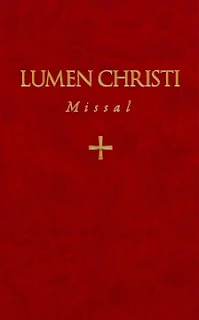Many NLM readers will no doubt be aware of the great work that Adam Bartlett is doing for chant in the vernacular. I only found out recently the full extent of his work. His compositions are published by Illuminare Publications. He is creating excellent chants for the Ordinaries and Propers of the Mass, and responsorial Psalms available through the Missal, Hymnal and Simple Gradual. Furthermore, he is constantly composing, and four-part
arrangements for accompaniment and singing are posted on the Illuminare website score library weekly; they are available free of charge until they are published as a collection. Through the work that he and others are doing, I think that there is real hope for the establishment of an authentic tradition of chant for English language in the Roman Rite. His work sits alongside what is happening in the Anglican Ordinariate. One hopes that development in each will nourish the other in the future. I am great believer in the importance of the vernacular in the liturgy alongside - not replacing - the Latin, and among these English is in a uniquely important position at the moment. I have written here in the past of the importance of this not just in liturgical renewal, but also the evangelization of the culture (Has Pope Francis Saved Western Culture?). In his article for Adoremus, Bartlett considers the place of hymnody in the Liturgy of the Hours, not only by examining its history, but by providing a contemporary context for hymns in the upcoming edition of the Liturgy of the Hours in English.
arrangements for accompaniment and singing are posted on the Illuminare website score library weekly; they are available free of charge until they are published as a collection. Through the work that he and others are doing, I think that there is real hope for the establishment of an authentic tradition of chant for English language in the Roman Rite. His work sits alongside what is happening in the Anglican Ordinariate. One hopes that development in each will nourish the other in the future. I am great believer in the importance of the vernacular in the liturgy alongside - not replacing - the Latin, and among these English is in a uniquely important position at the moment. I have written here in the past of the importance of this not just in liturgical renewal, but also the evangelization of the culture (Has Pope Francis Saved Western Culture?). In his article for Adoremus, Bartlett considers the place of hymnody in the Liturgy of the Hours, not only by examining its history, but by providing a contemporary context for hymns in the upcoming edition of the Liturgy of the Hours in English.
The second story, by
Joseph O’Brien, tells of the newly-dedicated
Newman Center church on University of Nebraska’s campus in Lincoln, and how beauty of the architecture and stained glass windows is intended as a key element in the liturgical
formation of college students. While the images in the windows, for example, will communicate and reinforce the truths of the Faith through their content pedagogically, that is not their sole purpose or even their highest purpose. The beauty of the form communicates something that, to paraphrase of the Catechism, words cannot. Content and form combine beautifully in their profoundly thought out liturgical context, so as to encourage in the students a deep and authentic participation in the liturgy. This is the ultimate purpose of beauty in the liturgy. As Chris Cartens points out in his editorial, it is the transfiguration of the students through the worship of God in the Sacred Liturgy, as members of the body of Christ, that is the ultimate aim of this. One hopes that the new Newman Center in Lincoln will have lasting effect, so that many students will go on to be part of a growing body of people who will contribute to the transformation of the whole culture.





